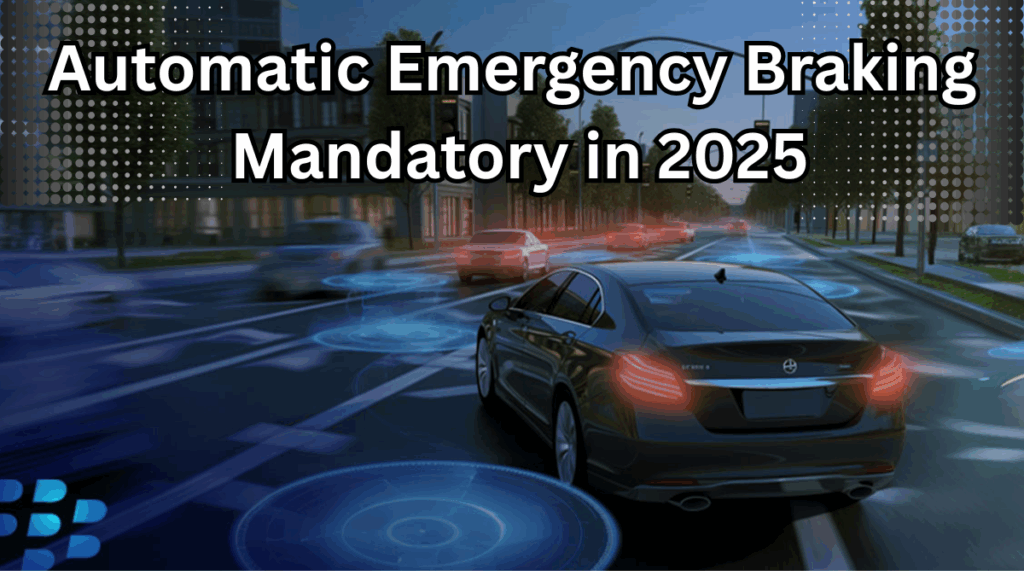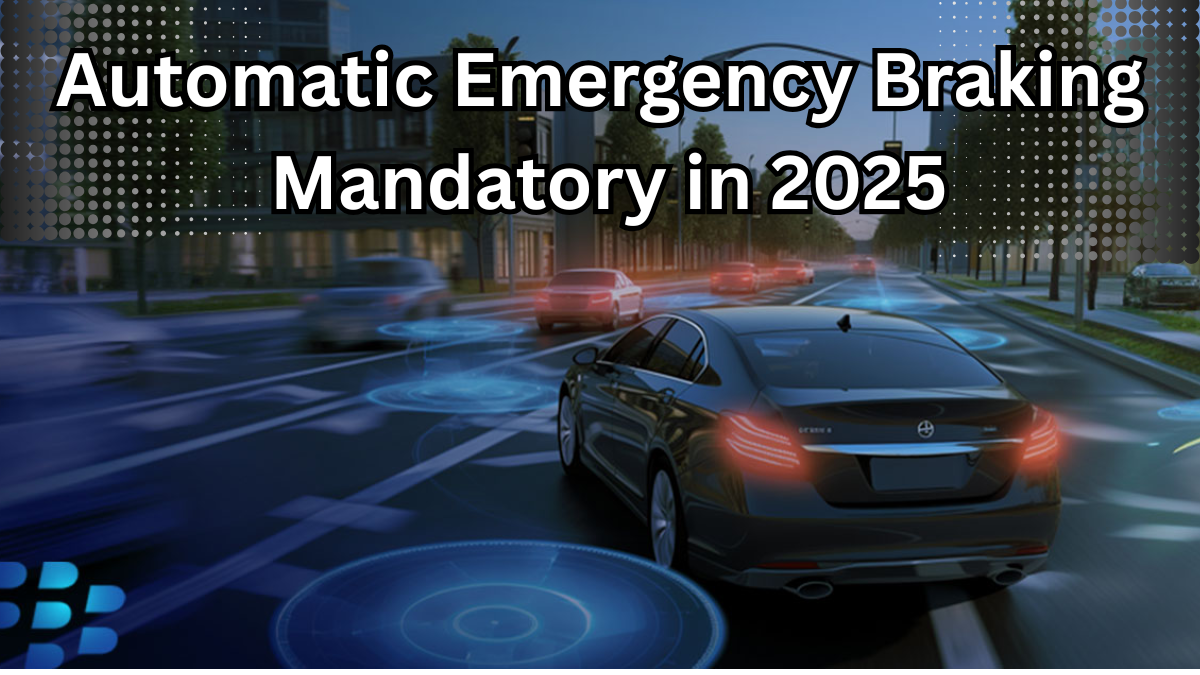The world of automotive safety is evolving rapidly. By 2025, Automatic Emergency Braking (AEB) will become a legal requirement on most new vehicles in the U.S. This change, driven by the Automatic Emergency Braking Mandate 2025, aims to reduce road accidents and protect lives.
Let’s explore what this means for drivers, automakers, and the future of road safety.

What Is Automatic Emergency Braking (AEB)?
Automatic Emergency Braking (AEB) is an advanced safety feature designed to help drivers avoid collisions or lessen their severity.
Key functions include:
-
Monitoring the road using sensors (radar, cameras, or both)
-
Alerting the driver when a crash seems imminent
-
Automatically applying the brakes if the driver doesn’t act in time
The AEB rule 2025 will ensure this life-saving technology becomes standard on most new vehicles.
Automatic Emergency Braking Mandate 2025 – Key Details
Here’s a snapshot of the requirements under the AEB rule 2025:
| Requirement | Details |
|---|---|
| Effective Date | September 1, 2025 |
| Applies To | New passenger vehicles and light trucks under 10,000 lbs |
| Speed Range | AEB must function at speeds up to 62 mph |
| Pedestrian Detection | Mandatory inclusion in AEB systems |
The new car requirement ensures AEB is reliable not only in city traffic but also at higher speeds and in detecting pedestrians.
Which Vehicles Must Comply?
The Automatic Emergency Braking Mandate 2025 applies to:
-
All new passenger cars
-
All new SUVs
-
All new light trucks (under 10,000 pounds)
It does not apply to:
-
Heavy trucks and commercial vehicles over 10,000 pounds (at this stage)
Impact on Car Buyers
For anyone purchasing a new car in or after 2025, here’s what to expect:
-
No extra cost for AEB — it will be a standard safety feature
-
Better crash protection for drivers, passengers, and pedestrians
-
Potential insurance discounts for cars equipped with AEB
-
Greater peace of mind on both city streets and highways
Benefits of the AEB Rule 2025
The Automatic Emergency Braking Mandate 2025 offers multiple benefits:
-
Reduction in rear-end crashes and pedestrian collisions
-
Fewer serious injuries and fatalities
-
Consistent safety standards across new vehicles
Challenges for Manufacturers
Automakers face several challenges as they work to meet the new car requirement:
-
Integrating AEB into all qualifying models without significantly increasing costs
-
Ensuring reliable performance in various driving conditions
-
Reworking production processes to include the necessary technology
FAQs
When does the Automatic Emergency Braking Mandate 2025 take effect?
The rule becomes mandatory for new vehicles starting September 1, 2025.
What types of vehicles are included in the AEB rule 2025?
The rule covers new passenger cars, SUVs, and light trucks under 10,000 pounds.
Will AEB work at highway speeds?
Yes. Under the AEB rule 2025, systems must function at speeds up to 62 mph, making them effective in highway scenarios.
Do older vehicles need to be retrofitted with AEB?
No. The Automatic Emergency Braking Mandate 2025 applies only to new vehicles. Existing cars are not affected by this requirement.
Click here to learn more
